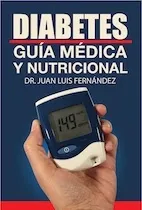Many diabetics are subjected to pressures to limit fruity consumption due to their carbohydrate content.But if we stop a little, we will see that most healthy foods in nature have more or less carbohydrates.This includes fruits, vegetables, integral cereals and milk.
Actually, the sugar and calorie content of most fruits is low to moderate, so they can be part of a healthy and balanced diet for people with diabetes.
Unfortunately, some diabetic patients consider that fruits are prohibited foods.In this article we will try to demystify this erroneous concept.
My eBook on Diabetes
Fruit composition
Fruits contain several important ingredients for the proper functioning of the organism: water, sugars, fiber, vitamins and minerals .
Water
75-95% of the weight of fruits is water, so it contributes to good hydration, so important in diabetes.This makes them ideal for consumption in the summer months, especially in young and elderly children, which are more vulnerable to dehydration.
sugars
The presence of fruits sugars are a source of controversy for some people.These have three types of sugars in variable proportion: fructose, glucose and sucrose .Sucrose is also called table sugar, because we use it to sweeten food.With digestion, sucrose becomes a glucose unit and another fructose.
The fructose is the most abundant sugar of fruits, constituting about 50%, so it is called fruit sugar, and it is the one that gives it the sweet taste.>
glucose is the most common sugar of the body .All carbohydrates when digesting becomes sugar to be able to absorb.Glucose is an essential nutrient, because all the body's cells use it to produce energy.
Carbohydrates (or carbohydrates) represent 5-20% of the content of the fruits.The melon, watermelon and strawberry have about 5%, while the banana is 20% (wikipedia) .
From the point of view of blood glucose control, what matters is the amount of carbohydrates ingested, and not the type of food.That is, which makes the same effect a ration of 15 g of carbohydrates from fruit, legumes, cereals or carbonated soda.Now, naturally, there are healthier foods than others because of the nutrients they provide.
Fiber
fruits have soluble and insoluble fibers .On average, we consume only 15 grams of fiber a day, when recommended about 30 grams.The fibers make one feel more full, so they decrease hunger.
Dietary fiber consumption is associated with the following benefits for health:
- Cholesterol decreases
- Improves constipation
- Improves the symptoms of colon diverticula
- It contributes to prevent colon cancer
- Help lose weight
Vitamins
fruits, especially citrus fruits (lemon, orange, tangerine), are rich in vitamin C. Some, in addition, have vitamins A, E and complex B. Vitamins A, C and E are antioxidant, withbeneficial health effects.
Minerals
All fruits contain minerals, especially potassium.Arterial hypertension is common in type 2 diabetes.Potassium helps regulate blood pressure .
The diuretics are very popular antihypertensive medications.Oneof its side effects is the decrease in potassium in the blood, which can lead to serious health problems. fruits help recover normal blood potassium levels .
Some fruits such as avocado and dry fruits such as nuts have monoinsaturated fatty acids (good fats), which help lower cholesterol.
What is a ration of fruit?
Fruit ration definition
A ration of a food is the amount that an average person ingests at a given time .In practice, standardized measures have been published for different types of food.
In the case of fruit, the fao defines it as the size of a tennis ball or a bulb .The US Department of Agriculture defines a portion of fruit such as ½ cup of peeled fruit , but may vary depending on the fruit.
A practical measure is what fits in the palm of the hand .This measure is variable, as it reflects the needs of each individual depending on their size.
A ration of fruit is equivalent to a ration of carbohydrates, which weighs 15 grams.
Examples of a ration of popular fruits
- 1 medium pear
- 1 medium apple
- 1 median orange
- ½ grapefruit
- 1 medium peach
- ½ cup peach of can
- 1 medium banana
- 8 strawberries
- 2 kiwis
- 2 small plums
- 1 cup pineapple
- 1 cup of melon
- 1 cup of papaya
- ½ mango or ½ cup of handle
- 1 cup of grapes
- 3/4 cup of blueberries (blueberries)
- 2 tablespoons of raisins
- ¾ Cup fruit juice
Ingesta recommendations
Fruits are the natural dessert of choice.They are also the ideal snack due to its pleasant taste and the nutrients it brings.Prefer fresh fruits in your natural state;If you consume fruit juices, make sure it is 100% natural (not concentrate), and without added sugar.
In a healthy diabetics diet, about 50-60% of calories must come from carbohydrates, 25-30% of fats and 15-20% protein.
In type 2 diabetes, fruits consumption can be part of a dietary descent plan.
In the flexible treatment of type 1 diabetes, the rapid insulin dose at meals is calculated based on the amount of carbohydrates.The grams of fruits must be incorporated into the total carbohydrate grams.








